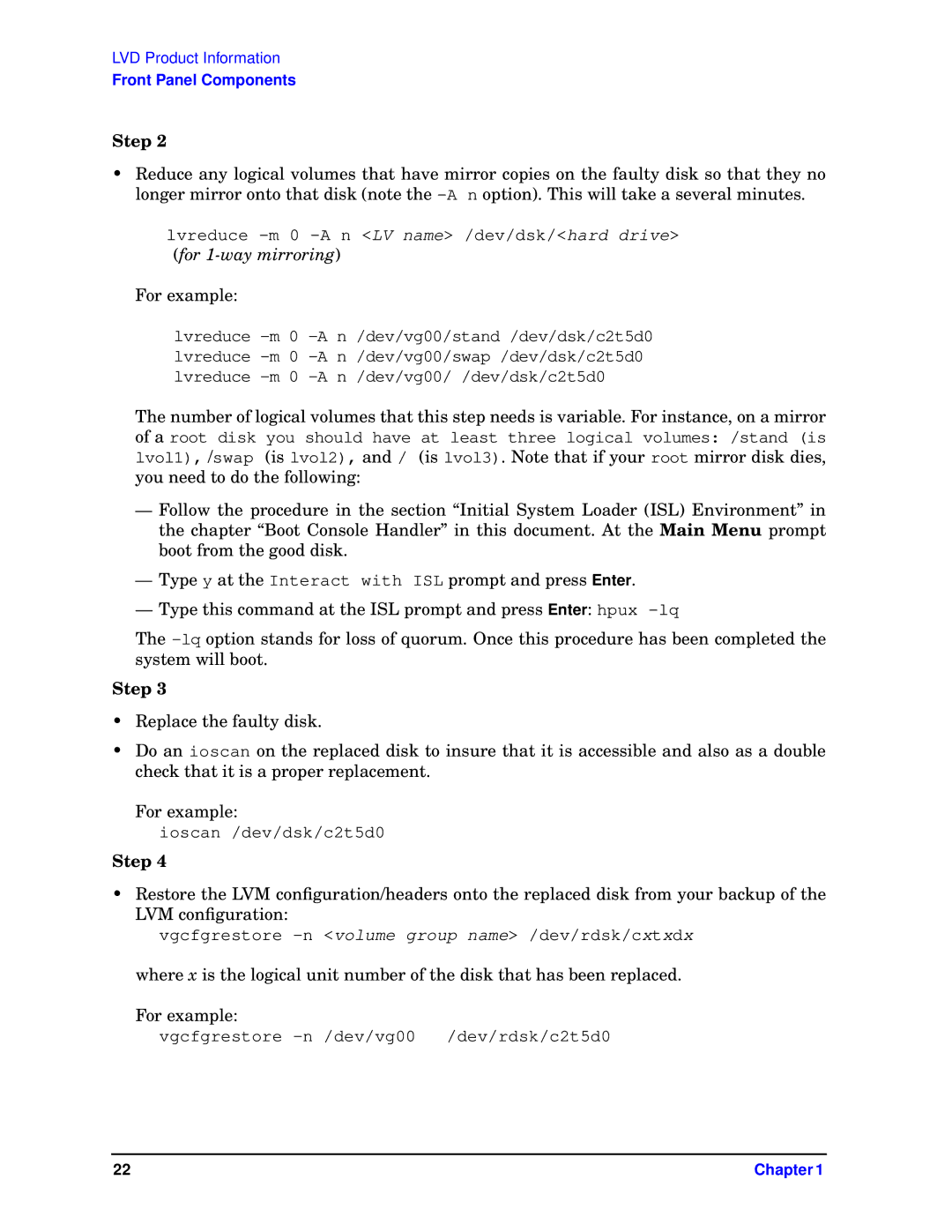LVD Product Information
Front Panel Components
Step 2
•Reduce any logical volumes that have mirror copies on the faulty disk so that they no longer mirror onto that disk (note the
lvreduce
For example:
lvreduce
The number of logical volumes that this step needs is variable. For instance, on a mirror of a root disk you should have at least three logical volumes: /stand (is lvol1), /swap (is lvol2), and / (is lvol3). Note that if your root mirror disk dies, you need to do the following:
—Follow the procedure in the section “Initial System Loader (ISL) Environment” in the chapter “Boot Console Handler” in this document. At the Main Menu prompt boot from the good disk.
—Type y at the Interact with ISL prompt and press Enter.
—Type this command at the ISL prompt and press Enter: hpux
The
Step 3
•Replace the faulty disk.
•Do an ioscan on the replaced disk to insure that it is accessible and also as a double check that it is a proper replacement.
For example:
ioscan /dev/dsk/c2t5d0
Step 4
•Restore the LVM configuration/headers onto the replaced disk from your backup of the LVM configuration:
vgcfgrestore
For example:
vgcfgrestore
22 | Chapter 1 |
